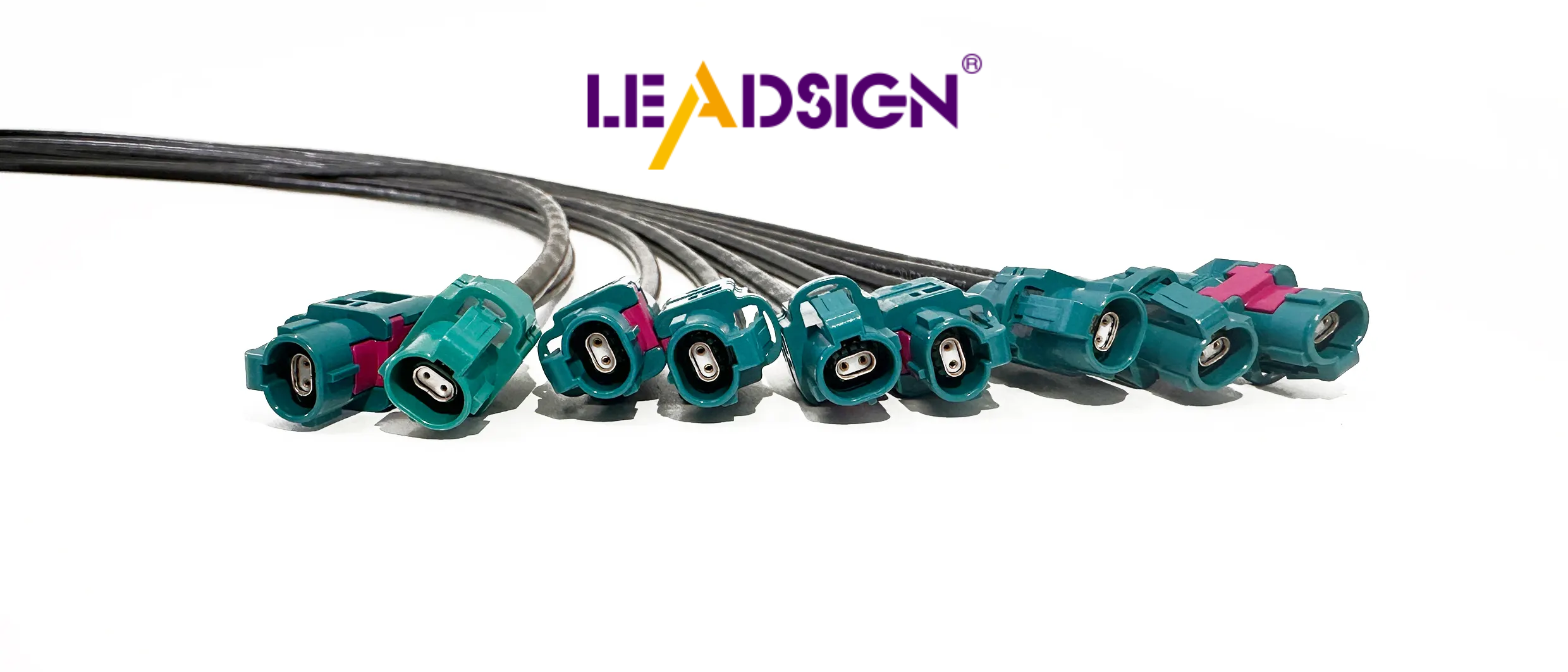H-MTD: Revolutionizing Auto Wire for Driver Assistance

Fast data transfer is crucial in today's automotive industry. As vehicles become more sophisticated, they require rapid data sharing to support innovative features. H-MTD technology represents a significant advancement in this area, offering high-speed data transmission up to 56 Gbit/s, which enhances the performance of modern driver assistance systems. This cutting-edge technology not only boosts connectivity but also ensures the reliability of automotive wire. By integrating H-MTD, automakers can facilitate seamless communication between control units, resulting in safer and more efficient driving experiences.
Understanding H-MTD Technology
What is H-MTD?
Definition and components
H-MTD means High-Speed Modular Twisted-pair Data. It is a big step forward in car wire technology. This system has special connectors and cables for fast data transfer. The main parts are modular connectors that send data up to 56 Gbit/s. These connectors can handle frequencies up to 20 GHz, perfect for new car networks.
Key features and benefits
H-MTD has many important features that make it better than old wiring systems. First, its fast data transmission helps different car systems talk quickly and reliably. This is very important for driver help and self-driving cars. Also, the modular design of H-MTD connectors makes them easy to install, saving space and weight. This flexibility helps car makers add new tech without losing performance or efficiency.
The Role of H-MTD in Automotive Wiring
Comparison with traditional wiring systems
When you compare H-MTD with old wiring systems, you see many differences. Old systems often can't handle the fast data needs of today’s cars. But H-MTD connectors are made for high-speed data transfer, working better in vehicle telecommunications and networking. Old wiring might not be as flexible or efficient, often leading to bigger setups.
Advantages in data transmission and reliability
H-MTD is great at sending data fast and being reliable. It sends data at speeds up to 56 Gbit/s so important information moves smoothly between car systems. This speed is key for real-time processing needed by driver assistance systems. Plus, the reliability of H-MTD connectors lowers the chance of losing data or interference, making vehicles safer and more functional overall. By using H-MTD, car makers keep their vehicles advanced, giving drivers a safer and more connected experience.
Uses of H-MTD in Helping Drivers
Making Camera Systems Better
Clearer Pictures and Faster Processing
H-MTD makes car cameras work better. It helps send data fast, which is needed for clear pictures. This means cameras can take and show clear images quickly. Fast data transfer with H-MTD helps process images in real-time. Driver help systems need quick and correct pictures to work well. So, H-MTD is very important in new car tech.
Working with Other Car Parts
Cameras connect easily with other car parts using H-MTD. Its design makes it simple to link different parts inside the car. This lets camera info be shared fast with things like maps and safety tools. Quick data sharing makes driver help systems work better together.
Helping Advanced Driver Assistance Systems (ADAS)
Quick Data for Safety Tools
ADAS needs fast data to watch and react to roads. H-MTD sends data quickly so ADAS can do safety jobs like avoiding crashes and stopping suddenly. The strong H-MTD connectors keep data safe, making sure safety tools always work right.
Effect on Cruise Control and Lane-Keeping
H-MTD helps cruise control and lane-keeping a lot. These need quick info to change speed or stay in lanes right away. With fast data from H-MTD, these systems adjust smoothly and correctly, making driving safer by reducing mistakes.
H-MTD and the Future of Self-Driving Cars
Helping Self-Driving Car Technologies
Fast data needs for self-driving systems
Self-driving cars need quick data sharing to work well. H-MTD connectors give fast data speeds up to 56 Gbit/s. This helps self-driving systems handle lots of info right away, which is key for things like finding paths, spotting obstacles, and making choices. The strong build of H-MTD connectors lets car parts talk easily, boosting how self-driving tech works.
Part in car-to-car (V2V) and car-to-road (V2I) talks
H-MTD tech is crucial for car-to-car (V2V) and car-to-road (V2I) talks. These are needed for smart transport systems. H-MTD connectors allow fast and steady data sharing so cars can swap info on traffic, road dangers, and more. This makes roads safer and smoother, helping self-driving cars fit into a connected world.
Challenges and Chances
Beating tech and rule problems
Using H-MTD in self-driving cars has challenges. Tech issues include matching with current car systems and working well in different weather. Rules also change as new tech comes in, posing another challenge. But solving these gives room for new ideas in cars. By fixing these problems, makers can make self-driving cars safer.
Room for new ideas in the car world
Using H-MTD opens many chances for new ideas in cars. As fast data needs grow, makers can find new uses for H-MTD beyond regular car stuff. The growth of 5G networks and the Internet of Things (IoT) adds to the need for better connections. With H-MTD tech, the car world can push forward with self-driving, smart travel, and more, changing how we move around.
H-MTD tech has changed car wiring by allowing fast data transfer and better connections. This helps driver help systems and leads to self-driving cars.
Main Benefits:
Better Safety: Quick data transfer helps safety tools work faster.
More Efficiency: Modular design uses less space and weight, making it easy to fit in.
"H-MTD is now a connector standard for car differential uses everywhere," known by big car companies like Volkswagen and BMW.
The future of car tech looks bright with H-MTD, bringing new ideas and smarter ways to travel.
See Also
Transforming Auto Connectivity: Benefits of High-Speed FAKRA-Mini Connectors
Improving Auto HSD Systems with USB Technology
The Future of Self-Driving: HFM Tech's Impact on the Sector
Maximizing Auto Data Transfer: Cutting-Edge Connectors and Cables

